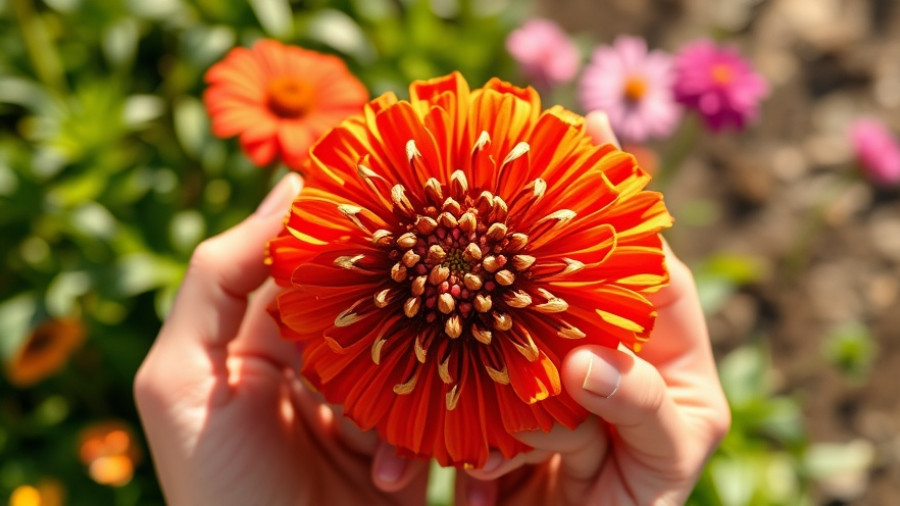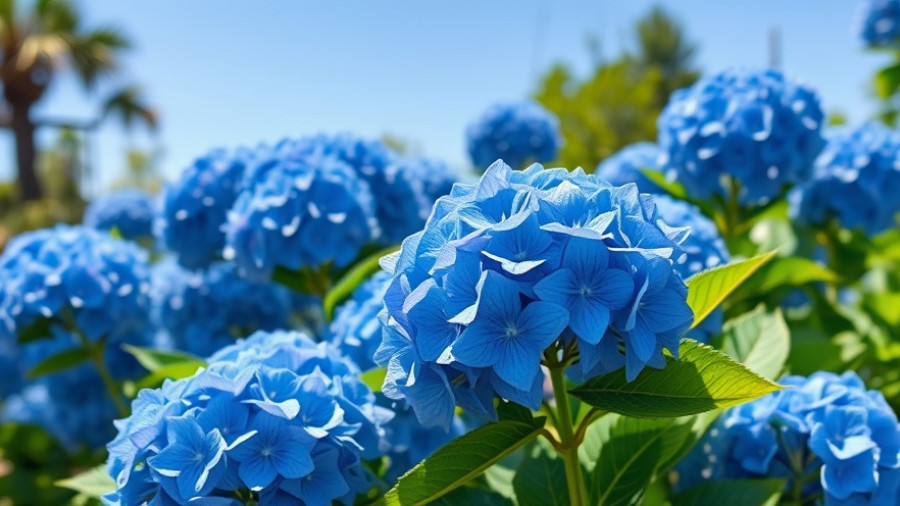
Celebrate October: The Ideal Time for Gardening in Zones 6 to 8
As we embrace the heart of fall in USDA gardening zones 6 through 8, October provides a wonderful opportunity for gardeners to reflect, harvest, and prepare for the cold months ahead. With the days still mild yet nights turning cooler, the autumn transformation is upon us, and so is the routine of garden maintenance and seasonal tasks.
Prepare for Frost: Your Gardening Timeline
The first frost is on the horizon, especially for gardeners in zone 6, who can expect it between October 17 and 31. For many, this heralds the end of their warm-season crops. By contrast, zones 7 and 8 enjoy a longer growing period, allowing for continued harvesting. Understanding the frost dates in your area is crucial for determining when to plant or harvest your vegetables and protecting tender plants. Frost-tolerant varieties, such as leafy greens, actually benefit from the chill, bringing out enhanced flavors that many gardeners relish.
Harvest and Preservation: Bountiful Produce Awaits
October is often synonymous with abundance in the garden. Gardeners in zones 6 through 8 can look forward to a variety of crops ready for harvesting including spinach, kale, and root vegetables. Now is the perfect time to can, pickle, or store your excess harvest for those colder months. Whether you want to dry herbs for winter use or preserve sweet potatoes and pumpkins, taking action now will ensure a sustainable supply throughout the winter.
Planting for the Future: Perennials, Bulbs, and More
An exciting aspect of gardening this October is the chance to plant spring-flowering bulbs, trees, and perennials. Preparing your garden now sets the stage for new growth in the spring. Adding these elements before the ground freezes not only enhances your garden’s aesthetics but also ensures that it can flourish in the sub-zero months ahead. Consider your garden plan carefully; planting hardy varieties in late fall gives you a jump start on the growing season.
Essential Gardening Tasks: From Weeding to Watering
With the summer vegetables winding down, it’s time for some essential garden maintenance. Keep your garden tidy by removing spent plants and debris; this not only looks better but helps prevent pests and diseases. Consistent weeding and mulching are a garden's best friends, suppressing weed growth and retaining moisture as temperatures fall. Additionally, don’t forget to give your newly planted perennials ample water, as this is crucial for establishing a strong root system before frost arrives.
Reflections and Planning: Capturing What Works
As the growing season comes full circle, reflecting on what worked and what didn’t can yield benefits for next season. Keeping a garden journal is essential for noting successes and failures — you’ll want to keep track of your best-performing plants and take note of what may require adjustments in locations or care. Are there new backyard makeover ideas you want to try next year? Perhaps an outdoor kitchen design or additional container gardening can expand your gardening experience next spring. By planning now, you can transform your gardening techniques to optimize future yields.
Join the Community: Share Your Garden Journey
Don't forget the sense of community that gardening can foster. Share your harvests with neighbors and friends or engage in local gardening forums. Connecting with fellow gardeners not only enriches your experience but also opens doors to learning about sustainable gardening practices, eco-friendly yard care, and innovative landscaping ideas. Each shared harvest tells a story of hard work and passion for the earth.
Transform Your Garden Into Your Sanctuary
October is not just about preparations; it’s a time to enjoy your garden’s transformation as well. As the leaves shift to warm hues and harvest time nears, take moments to relax around a fire pit or enjoy the beauty of your landscape lighting after dusk. Whether you're simply nurturing the plants or making room for new designs, it's a beautiful time to be outside in your garden sanctuary.
If you haven’t already, take advantage of the tasks on this October gardening checklist for your zone. Let's embrace this season of change, growth, and community together!
 Add Row
Add Row  Add
Add 




Write A Comment